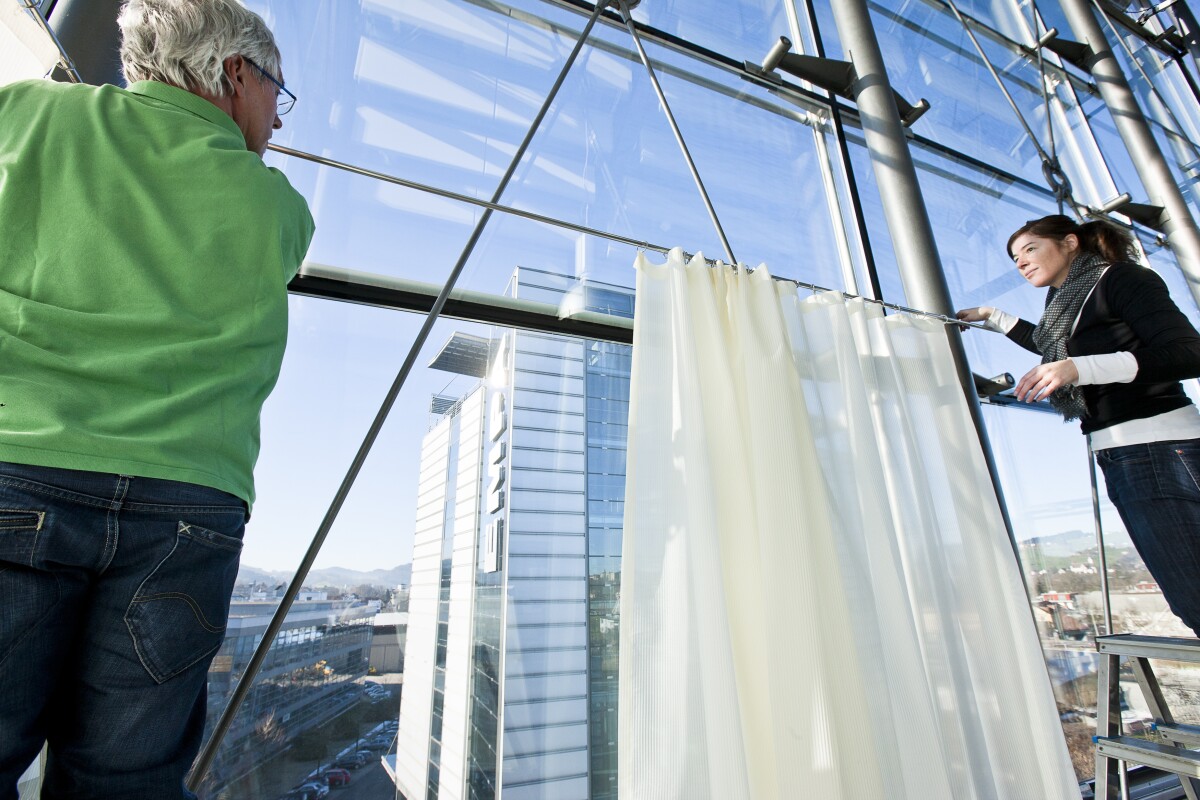Heavy curtains made from thick material such as velvet are often needed to keep noise out of indoor environments, but Swiss researchers have come up with another option. The Empa researchers, in collaboration with textile designer Annette Douglas and silk weavers Weisbrod-Zurrer AG, have developed lightweight, translucent curtains which are five times more effective at absorbing sound than their conventional counterparts.
Following on from her 2005 Swiss Textile Design award winning work on acoustic walls for open-plan offices, Annette Douglas came up with the idea of the curtain. Douglas took her ideas to Empa acousticians who developed mathematical models of a fabric. Weisbrod-Zurrer silk weavers were then brought on board to manufacture various samples to test and optimize the acoustic properties of the fabric. Douglas translated these findings into weaving techniques, incorporating the flammability and translucent characteristics required. Weisbrod-Zurrer then refined the manufacturing process to ensure the curtains exhibited the acoustic attributes. "Acousticians are pretty astonished when they see the readings we are achieving with the new curtains in the reverberation room. The weighted sound absorption coefficient is between 0.5 and 0.6," said Kurt Eggenschwiler, Head of Empa's Acoustics/Noise Control Division. "In other words, the new textiles 'quench' five times more sound than conventional translucent curtains. The new curtain genuinely absorbs sound, noticeably improving the room acoustics – and its design is also very high quality."

Curtains made from the material allow natural light through but also maintain privacy and their use is being targeted at offices, restaurants, hotel lobbies, seminar rooms and auditoriums.
The material is now finding its way onto the the market and has generated "massive" interest according to Eggenschwiler.
Source: EmpaProduct Page: Weisbrod-Zurrer AG







